niolox/iStock/GettyImages
Deep-frying a large piece of meat can produce an unusually tasty and juicy meal. Unfortunately, it can also produce a catastrophic fireball if the oil ignites, which is why it can be preferable to work with a so-called oilless fryer. These efficient cookers use infrared radiation -- a form of high-energy light -- to cook the meat and produce a crisp exterior similar to the one you'd get from frying. Although originally developed for "fried" turkeys, they also work well for cooking large cuts such as a Boston butt.
Trim the external fat on your pork butt to no more than 1/4 inch of thickness. Score it in a crosshatch pattern, if you wish, by making shallow cuts with a sharp knife. Don't cut through the fat and into the pork itself, or its juices will cook out.
Rub the Boston butt with your favorite dry seasoning spice mixture and let it rest overnight so the flavors have time to infuse into the meat.
Place the butt into the oilless fryer's basket. If your cooker came with a probe thermometer, insert the probe into the middle of the butt. Otherwise, use a standalone probe thermometer.
Turn on the gas and light your oilless fryer, then begin timing. Meats typically require approximately 10 minutes per pound, though it can be longer if you're cooking on a very cold day. The butt is safe to eat as roast pork when it reaches an internal temperature of at least 145 degrees Fahrenheit, or 160 F for diners who aren't comfortable with pink pork.
Continue cooking the butt to 180 F, if you prefer to eat your butt in the form of pulled or shredded pork. Lift out the basket at that point, if you wish, and paint the butt with your favorite barbecue sauce. Give it a few more minutes for the sauce to caramelize, then remove it from the cooker.
Test the pork butt under a loose covering of aluminum foil for 10 to 15 minutes before carving or shredding it.
Related Articles

Cooking Times for Smoking Meat in an ...
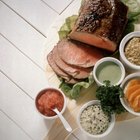
How to Cook 5 Lbs. of Beef Tenderloin
How to Convection Cook a Pork Shoulder ...
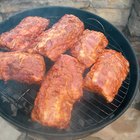
How to Smoke Ribs With a Gas Smoker
Can You Slow-Cook a Brined Pork?

How to Make a Blackbuck Antelope Roast
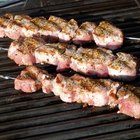
How to Cook Pork Loin
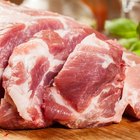
How to Make Asado Chinese Style

How to Cook Shredded Pork Roast in a ...
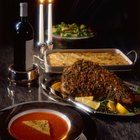
How to Smoke a Leg of Lamb Using an ...
How to Cook Boneless Lamb Butterflied ...

How to Cook a Small Lamb Shoulder

How to Grill a Semi-Boneless Leg of Lamb

How to Cook a Frozen Burger in a Skillet
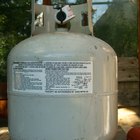
How to Barbeque a Brisket on a Gas Grill

How to Cook a Butterflied Pork Chop in ...
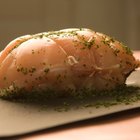
How to Braise Pork
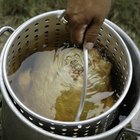
How to Deep-Fry Turkeys and Ducks

How to Steam Pork Ribs

How to Cook Turkey Legs on the Grill
References
Tips
- Propane-powered oilless fryers are intended for outdoor use and can accommodate large pieces of pork. Some manufacturers also produce electric countertop versions, though they're usually best suited to smaller cuts of meat.
Writer Bio
Fred Decker is a trained chef and prolific freelance writer. In previous careers, he sold insurance and mutual funds, and was a longtime retailer. He was educated at Memorial University of Newfoundland and the Northern Alberta Institute of Technology. His articles have appeared on numerous home and garden sites including GoneOutdoors, TheNest and eHow.